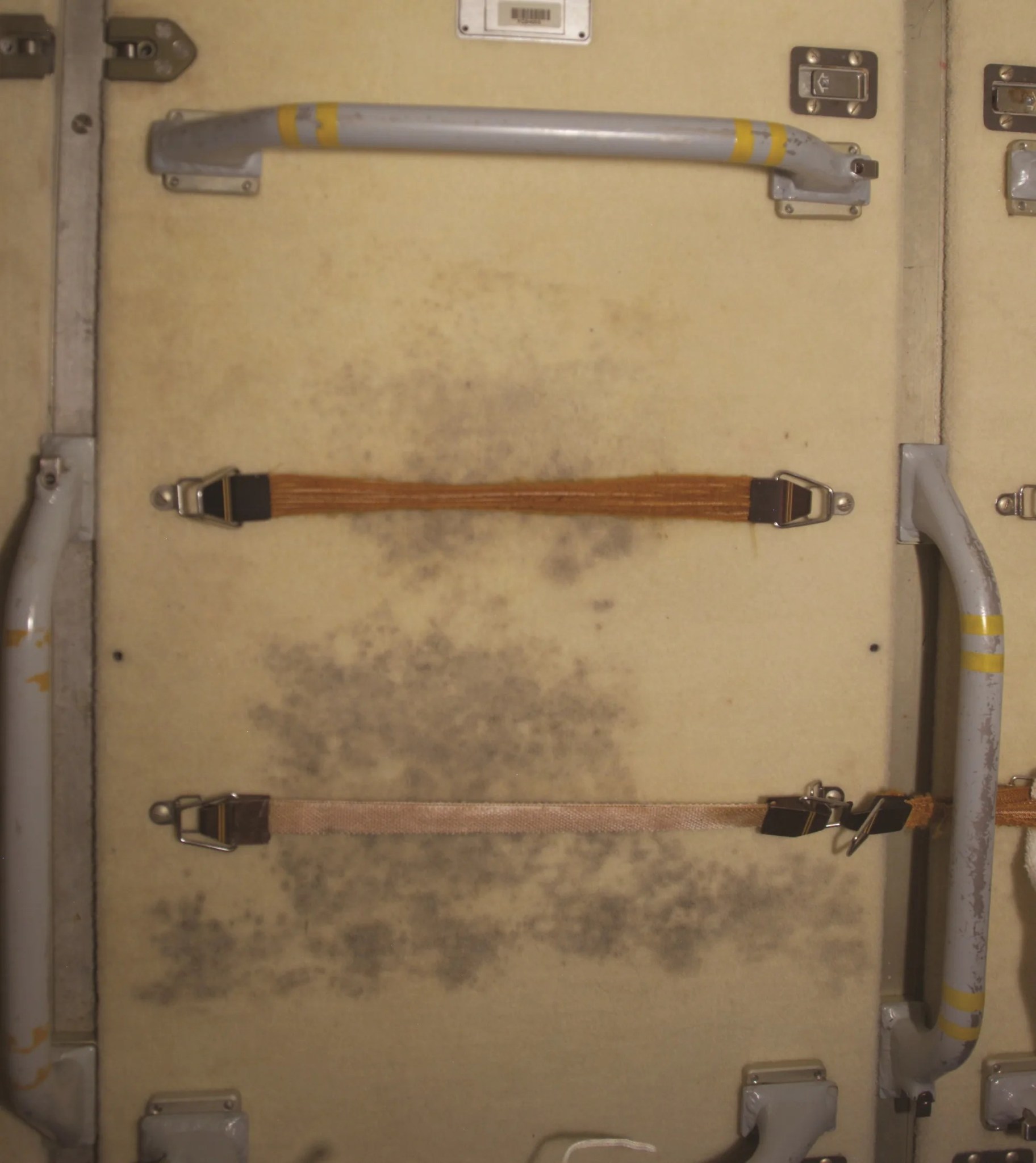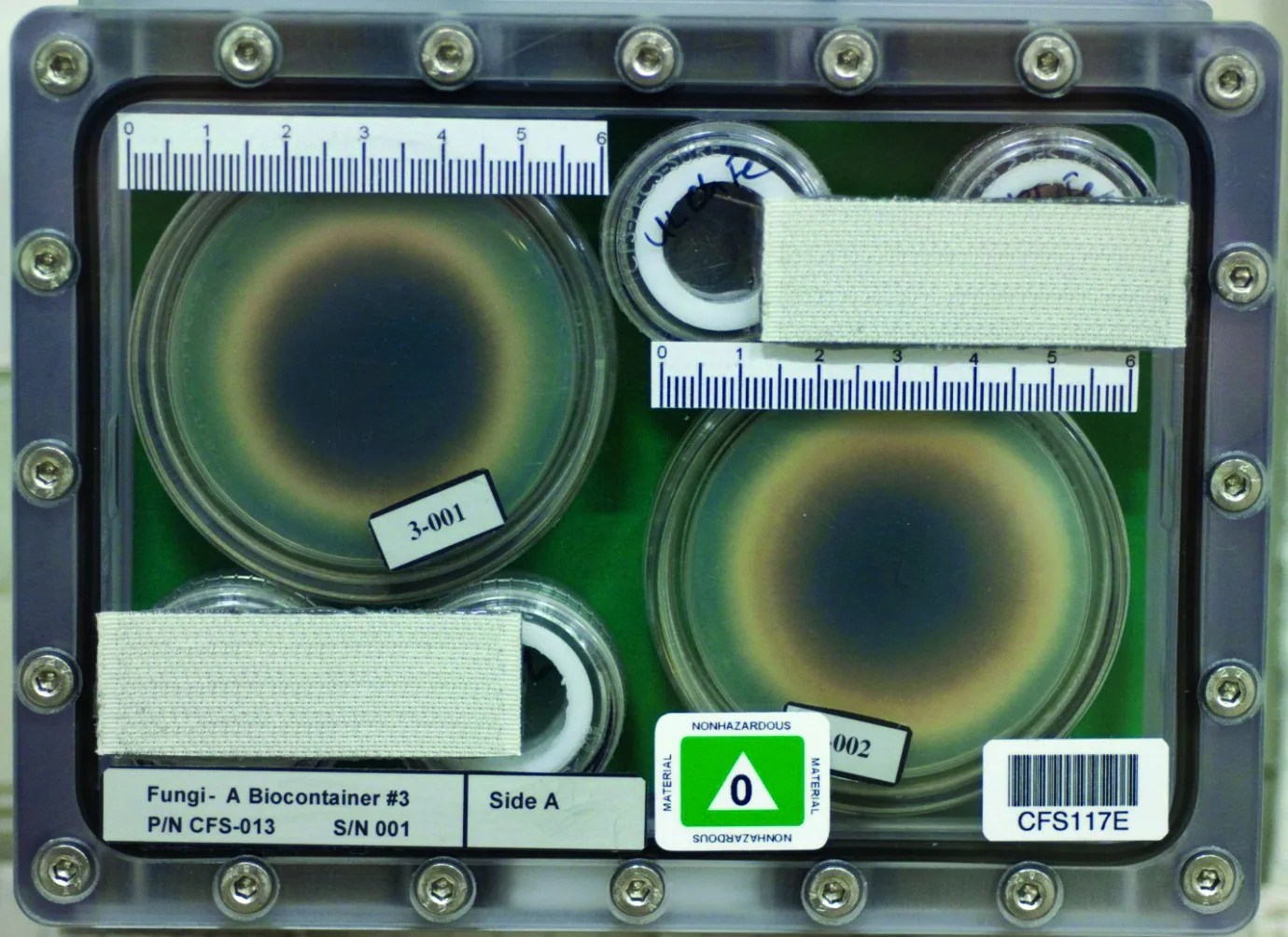Microbiology Program
Experiments
New Study Investigating Waterborne Bacteria for the First Time Reveals Mechanisms of Infection
A recently published Space Biology study investigated a species of waterborne bacteria that is known to infect humans, Mycobacterium marinum, which is closely related to t the bacteria that cause tuberculosis and leprosy. The objective was to determine if exposure to simulated spaceflight would cause this type of bacteria to become more resistant to stress or become more infectious. Results of this experiment suggest that simulated microgravity may stimulate a nutrient-deprived limited environment similar to that found within human immune cells during an infection.
This investigation was the first study to look at the effects of simulated microgravity on waterborne mycobacteria and to determine what mechanisms they use to adapt to this environment. Mycobacterium marinum grows at 28–35 °C and infects hosts such as fish and frogs, but can infect humans resulting in skin lesions. Planet Earth is teeming with microorganisms that occupy every ecological niche of the biosphere including water. Waterborne bacteria present a particular concern for humans living in closed systems, such as the International Space Station, because they can cause illness if ingested. For the health and safety of the crew it’s important to identify potential species that could contaminate a water supply in space and develop methods to combat infectious processes. This study determined that waterborne mycobacteria alter their growth, expression of stress responses, and their sensitivity to oxidizing conditions when subjected to growth under simulated microgravity. More research is needed to identify important proteins required for adaptation to growth and survival under microgravity, which may aid in the design of new disinfection procedures and drugs to prevent human infection during space travel.
Abshire CF, Prasai K, Soto I, Shi R, Concha M, Baddoo M, Flemington EK, Ennis DG, Scott RS, Harrison L. Exposure of Mycobacterium marinum to low-shear modeled microgravity: Effect on growth, the transcriptome and survival under stress. npj Microgravity. 2016 Dec 1;2:16038.
Microbial Observatory of Pathogenic Viruses, Bacteria, and Fungi (ISS-MOP) Project (MT-2)
The ISS Microbial Tracking-2 series continues the monitoring of the types of microbes that are present on the ISS. Microbial Tracking-2 (MT-2) seeks to catalog and characterize potential disease-causing microorganisms aboard the ISS. Crew samples from pre-flight, in-flight, and post-flight times in addition to environmental samples from ISS surface and air locations will be collected to analyze any associations between the microbial content of the samples, as well as potential health effects.
Organism: Those found on ISS
Principal Investigator: Crystal Jaing, Ph.D., Lawrence Livermore National Laboratory, Livermore, CA
Instrument: Kits enabling surface and air sample capture
Investigating the Physiology and Fitness of an Exoelectrogenic Microorganism Under Microgravity Conditions (Micro-12)
This project is designed to study the effects of spaceflight on the physiology of an exoelectrogenic microorganism, Shewanella oneidensis MR-1. Exoelectrogenic microbes are able to pass electrons through their cell membranes, and can be used in microbial fuel cells to make electricity from waste organic material. This work will aid in understanding how microgravity may affect biological electron transport systems and microbial fuel cell use in future space missions.
Organism: Shewanella oneidensis MR-1
Principal Investigator: John Hogan, Ph.D., NASA Ames Research Center
Instrument: BioServe Fluid Processing Apparatus (FPA)
Microbial Tracking 2
Microbial Tracking-2 is the first Space Biology human-related investigation that seeks to catalog and characterize potential disease-causing microorganisms onboard the ISS. During three flight increments over the course of a year, astronauts will collect surface samples to identify the population of microbes on the ISS. We look at what’s in the crew quarters, the gym, the dining area, and the places where astronauts bathe. We look at the identity of microbes: what types are there, and in what concentrations? Are the microbes living or dead? If we find live microbes, we want to know if they are potentially harmful. Findings from the Microbial Tracking-2 study will provide NASA with tools to estimate crew health and spacecraft performance risks stemming from microbial growth onboard a crewed space vehicle.
Influence of Microgravity on the Production of Aspergillus Secondary Metabolites (IMPAS)
– a Novel Drug Discovery Approach with Potential Benefits to Astronauts’ Health (Micro-10)
The search for biomolecules to make new drug compounds may begin in space, with a common fungus called Aspergillus. In a novel drug discovery approach, NASA scientists have flown a payload of the fungus to study the influence of microgravity on the production of secondary metabolites (IMPAS). Characterizing the compounds that are produced by fungi when responding to stressors such as microgravity may give us the ability to harvest these compounds and make use of them for production of medicine, such as penicillin, which was also derived from a fungus.
Aspergillus is an important biomedical research species and an essential model organism for studies of cell biology and genetics, where it is especially useful as a data set for computational scientists interested in evolution and comparative genomics.
This flight experiment investigated whether microgravity allows silent fungal metabolite pathways to become activated. Investigators are studying how the stress of microgravity triggers changes in growth, gene expression, protein production, physical responses, and metabolism. Because Aspergillus’ genome has already been sequenced, a variety of modern, metabolomic, proteomic, and genomic/transcriptomic analyses can be performed, with final omics data archived in NASA GeneLab.
Results may provide new data on how spaceflight affects fungi, including whether the fungi can be induced to make new molecular compounds that pharmaceutical researchers can use to develop new drugs, including those to treat osteoporosis.
EcAMSat
Gaining a better understanding of how spaceflight affects microbial growth and fitness is of great importance to NASA. Past NASA Space Biology Program research has shown that exposure to spaceflight conditions causes some microorganisms to become more virulent, or infectious, as they adapt and acclimate to this new environment, creating a potential risk to crew health. It is important to understand whether changes in virulence are accompanied by changes in microbial antibiotic resistance so that flight doctors can accurately understand impacts to astronauts in microgravity, where the immune response is blunted.
The E. coli Anti Microbial Satellite (EcAMSat) mission, which launched aboard the Orbital ATK-8 mission in late 2017 was designed to investigate the effects of spaceflight on the antibiotic resistance of E. coli, a bacterial pathogen responsible for urinary tract infection in humans and animals. The fully automated experiments conducted within the EcAMSat used a colorimetric assay to determine the viability of bacteria after they are exposed to differing concentrations of the antibiotic gentamicin. This involved the use of
AlamarBlueTM, a “viability dye”, which changes color from blue to pink in the presence of metabolically active, or living, bacteria. These color changes were monitored by an optical system in real time, which will allow EcAMSat to acquire, record, and transmit the viability data back to Earth. The purpose of the experiment was to determine the lowest concentration of antibiotic that inhibits bacterial growth in space. The EcAMSat mission also explored the genetic basis for spaceflight-induced changes in antibiotic resistance, by using a mutant strain of E. coli that helped determine the role that the bacterial stress response plays. The experiment has been concluded in early 2018, and the data, which was broadcast back to NASA scientists on Earth, are currently being analyzed and interpreted.
Additional Resources
Search NASA Task Book
To learn more about current and upcoming research projects in the NASA Space Biology program, search the Task Book: Biological and Physical Sciences Division and Human Research Program. Our online database of research projects includes project descriptions, annual research results, research impacts, and a listing of publications resulting from this NASA-funded research.
Life Sciences Data Archive
A searchable archive of NASA Life Sciences research is available at the Life Sciences Data Archive.
GeneLab Data Repository
Experiments that explore the molecular response of terrestrial biology to spaceflight have generated vast amounts of genomics data that are now publicly available for download from GeneLab.






























